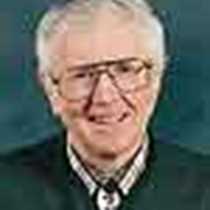Clearwater and Snake Rivers, Idaho
A split choice saw half our guests spend a day examining Corps of Discovery campsites along the Clearwater River while the other half jet boated 60 miles into the Hells Canyon of Snake River.
With few exceptions, the waterway route that Lewis and Clark followed has been so altered that few of the original campsites are accessible or recognizable. Most sites along the length of the Missouri, lower Snake and Columbia Rivers are covered by great reservoirs.
But the free flowing Clearwater River, hemmed by the pine clad Bitterroot Mountains, was as real as that portrayed in the journals.
Our local historian and guide, Linwood Laughy of Clearwater Connections, directed our attention to the historic site of a 150-foot Nez Perce lodge covered with woven bull rush mats. Here, Capt. Clark treated the medical needs of the occupants.
The Corps completely depleted its stock of trade goods early on the 1806 return journey, but each patient brought a horse in exchange for “treatment” which consisted of lotions, eye wash, the lancing or cleansing of wounds and doses of laudanum. These payments in “horse beef” fed the Corps.
At Long Camp, Linwood described the month-long wait in June among the Nez Perce before the Corps was able to break through the lingering snow on the heights of the Lolo Trail. During the wait, they socialized, traded, held dances, and had foot and horse races. They also conducted a ceremony of peace with all the chiefs of the tribe that proved the most helpful and steadfast on their journey to and from the Pacific.
At the Nez Perce creation monster site Linwood’s associates, Lee and Carol Hamilton, greeted us with a display of hide, fire and cordage or rope preparation tools used by the Nez Perce and the Corps. Guests were involved in striking fire with flint and steel, transferring the spark from charred wick to tinder bundles and blowing. There was a timed contest and loud encouragement as smoke billowed and flames blazed out of the tinder.
We saw Indian hemp, called “silk grass” by Clark in the journals, growing on the Clearwater banks. With it the Nez Perce made cordage, thread and bowstrings, and we learned the technique of rubbing away the hemp outer husk to release the fine strong fibers. Lee also had our guests make cordage with a twist right and wrap left technique.
The jet boaters saw bands of bighorn ewes beside the river and the rams that had just come down from the canyon heights for the breeding season, including a photo opportunity trophy ram. At the end of the day our separate parties joined at the Nez Perce Cultural Center at Lapwai, ID. Here they examined the regalia of the tribe known as “the dress-up Indians” because of their pride and skill in decking out themselves and their horses. This priceless collection is mostly pre-1840’s or prior to the onrush of miners and settlers.
A split choice saw half our guests spend a day examining Corps of Discovery campsites along the Clearwater River while the other half jet boated 60 miles into the Hells Canyon of Snake River.
With few exceptions, the waterway route that Lewis and Clark followed has been so altered that few of the original campsites are accessible or recognizable. Most sites along the length of the Missouri, lower Snake and Columbia Rivers are covered by great reservoirs.
But the free flowing Clearwater River, hemmed by the pine clad Bitterroot Mountains, was as real as that portrayed in the journals.
Our local historian and guide, Linwood Laughy of Clearwater Connections, directed our attention to the historic site of a 150-foot Nez Perce lodge covered with woven bull rush mats. Here, Capt. Clark treated the medical needs of the occupants.
The Corps completely depleted its stock of trade goods early on the 1806 return journey, but each patient brought a horse in exchange for “treatment” which consisted of lotions, eye wash, the lancing or cleansing of wounds and doses of laudanum. These payments in “horse beef” fed the Corps.
At Long Camp, Linwood described the month-long wait in June among the Nez Perce before the Corps was able to break through the lingering snow on the heights of the Lolo Trail. During the wait, they socialized, traded, held dances, and had foot and horse races. They also conducted a ceremony of peace with all the chiefs of the tribe that proved the most helpful and steadfast on their journey to and from the Pacific.
At the Nez Perce creation monster site Linwood’s associates, Lee and Carol Hamilton, greeted us with a display of hide, fire and cordage or rope preparation tools used by the Nez Perce and the Corps. Guests were involved in striking fire with flint and steel, transferring the spark from charred wick to tinder bundles and blowing. There was a timed contest and loud encouragement as smoke billowed and flames blazed out of the tinder.
We saw Indian hemp, called “silk grass” by Clark in the journals, growing on the Clearwater banks. With it the Nez Perce made cordage, thread and bowstrings, and we learned the technique of rubbing away the hemp outer husk to release the fine strong fibers. Lee also had our guests make cordage with a twist right and wrap left technique.
The jet boaters saw bands of bighorn ewes beside the river and the rams that had just come down from the canyon heights for the breeding season, including a photo opportunity trophy ram. At the end of the day our separate parties joined at the Nez Perce Cultural Center at Lapwai, ID. Here they examined the regalia of the tribe known as “the dress-up Indians” because of their pride and skill in decking out themselves and their horses. This priceless collection is mostly pre-1840’s or prior to the onrush of miners and settlers.



